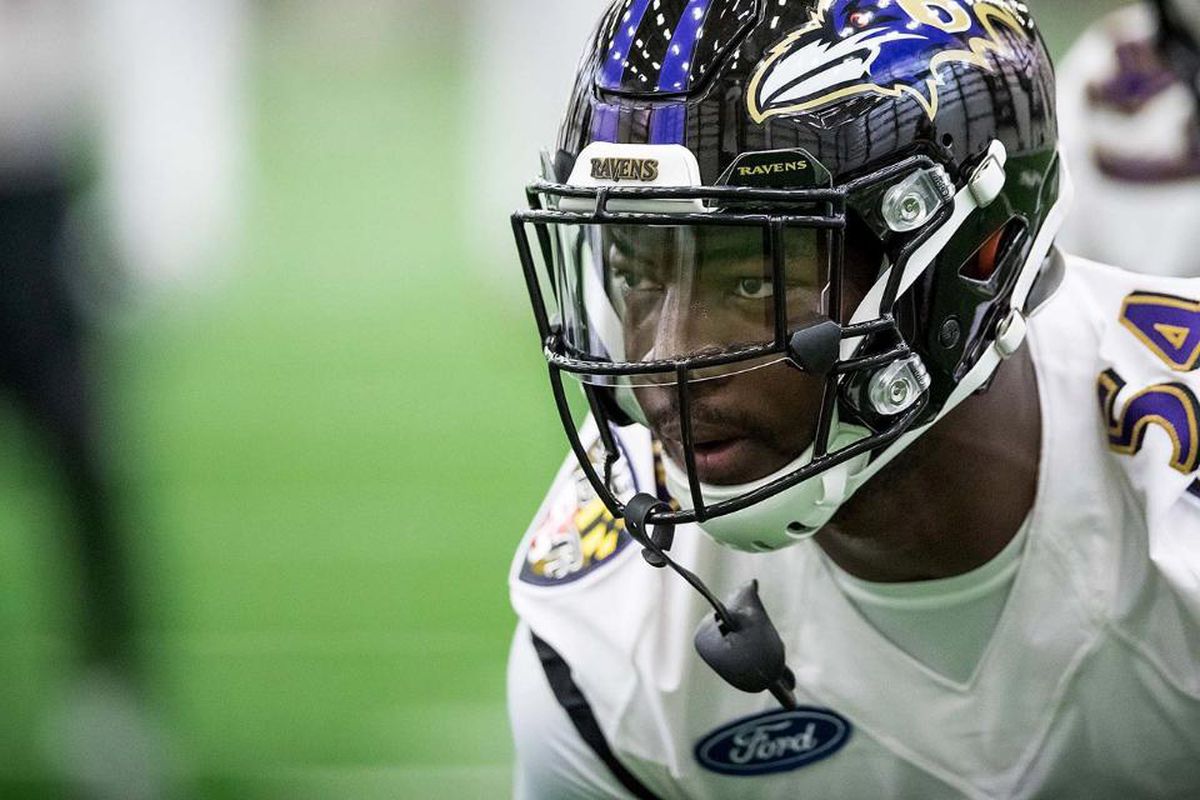The main theme of the 2017 NFL Draft for the Baltimore Ravens was defense. The first four selections brought a smile to the face of defensive coordinator Dean Pees.
One of those key draft selections was second-round pick Tyus Bowser, an outside linebacker out of Houston who is looking to buck the trend of recent underwhelming picks by Baltimore in the second round.
Bowser comes to Baltimore as a high-potential athlete – arguably Baltimore’s most athletic 2017 draft selection – who looks to turn his superior athletic profile into a consistent force on the field. At Houston, Bowser offered more as a pass rusher than in run defense, but with Baltimore, it will be paramount for him to become the complete package, long term.
With Terrell Suggs’ days in Baltimore winding down, the Ravens desperately need a young outside linebacker to develop as a three-down player, offering just as much against the run as the pass. Fellow Ravens rookie Tim Williams projects as a pure pass rusher, but Bowser may be the best candidate as the heir-apparent to Suggs.
Bowser has a long way to go before he can reach that point, and while his potential is among the highest in Baltimore’s draft class, he logically will never provide the impact of Suggs. But if Bowser can be the same type of player – a consistent pass rusher and run defender who is not afraid to drop into coverage – then it will help heal the wound of an inevitable departure by Suggs in the coming years.
Let’s take a look at where Bowser excels, and where he can improve.
The primary aspect of Bowser’s game that stands out is his relentless pursuit of the quarterback, bursting off the snap and maintaining a high motor throughout each play.
His mechanics can suffer given his pursuit at times, as Bowser oftentimes plays too fast. But that is a good problem to have, and a coachable one. Bowser’s endless pursuit throughout plays helps him to make an impact between the tackles, or in the open field.
Right now, the positives to Bowser’s game are his pursuit and aggressive mentality. This allows him to win as a pass rusher. However, to become more of a complete player, he needs to hone his craft in terms of technique to become more consistent.
Bowser’s relentless hunt of the quarterback is a good building block, however he still struggles with regularly bending the edge and fighting through stronger opposition.
Given Bowser’s athletic makeup, this is an issue that can certainly be fixed long term, but may lead to a limited impact early in 2017.
As noted above, it’s important for Bowser to develop in run defense. At the moment, Bowser still has plenty of work to do in this category.
However, given Bowser’s noted aggressive mentality and athleticism, he can realistically develop as an edge setter over the course of his first few NFL seasons, much like Suggs did early in his career.
Coming in as a rookie, Bowser is more of a “raw” athlete than some of the other Ravens 2017 draft picks, but what needs to be noted is a rookie is a four-year project, not a player expected to step in and contribute heavily in year one.
Bowser’s career arc may be similar to the one that 2016 second-round pick Kamalei Correa is following: ease in as a rookie before ideally taking on a larger role in year two.
The former Houston standout arguably has the highest ceiling of any Ravens rookie after first-round selection Marlon Humphrey, and the long-term outlook for Bowser is positive.
If Bowser does not make an impact right off the bat this season, be patient.
He has the talent and upside to develop long term.








